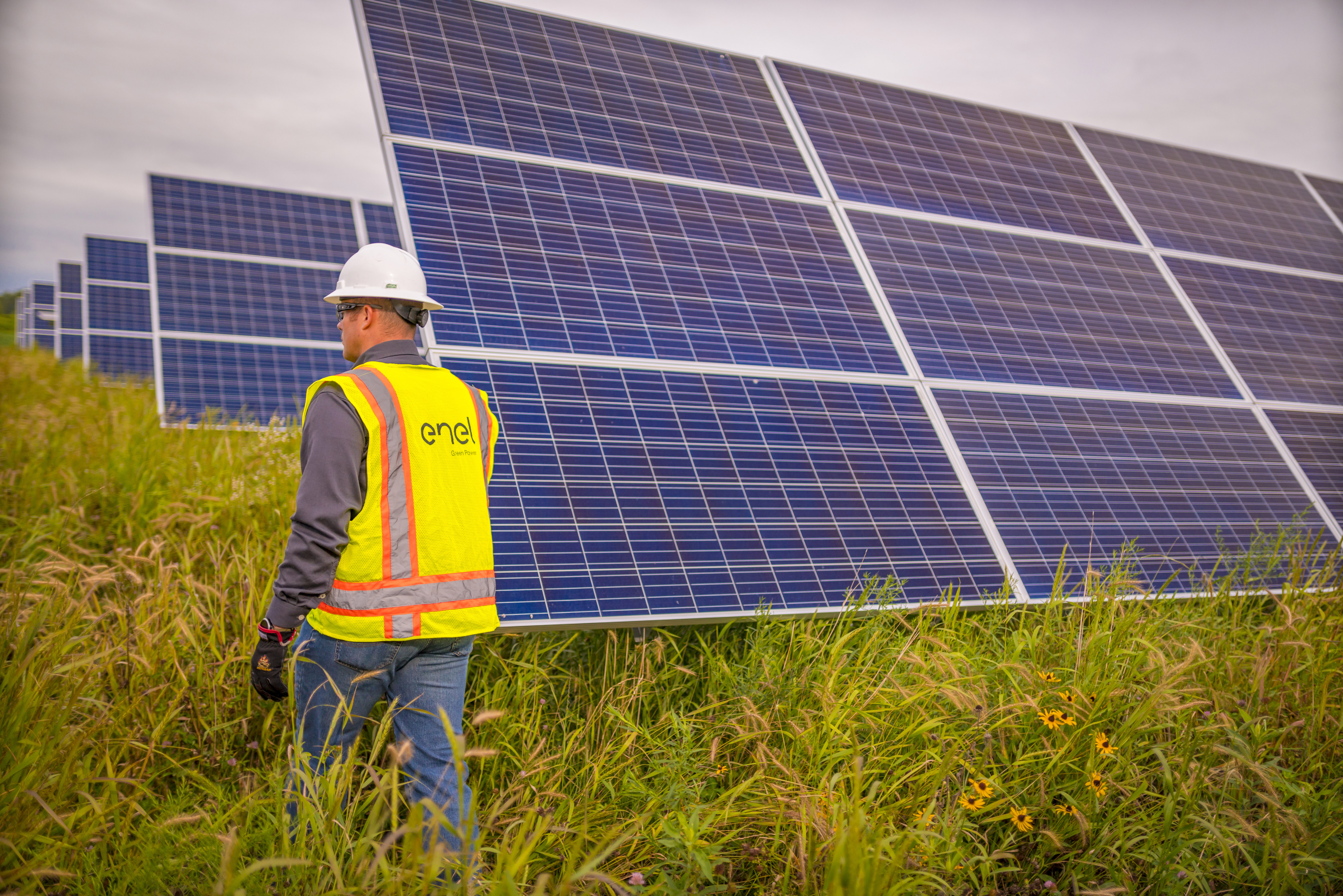Five trends shaping the renewable energy sector

The renewable energy sector in North America is rapidly expanding, with the proportion of electricity the U.S. gets from solar and wind nearly quadrupling in the past decade. Its growth has been driven by rising interest in decarbonization, including 70 percent of utilities committing to 100 percent clean energy goals, changes in customer goals, rapid advancements in technology and evolution in pricing and contract structures.
Regardless whether the current administration’s legislative agenda offers significant support to encourage low and zero-carbon energy sources, businesses across industries are expected to continue prioritizing their decarbonization goals and their transition to clean energy.
Here are the top five trends expected to shape the renewable energy sector and what it means for businesses.
1. Companies are setting science-based and net-zero targets at record rates
Businesses continue to work with the Science-Based Targets initiative (SBTi) at a record rate to reduce their emissions. According to SBTi, since 2021 the number of companies committed to setting science-based targets has more than tripled and now in the face of increased shareholder pressure the number topped 2,940 in the first quarter of 2022.
Organizations are also becoming more ambitious and eager to take on leadership roles in their industries by committing to 100 percent renewable energy or net-zero carbon emissions. With SBTi releasing the world’s first framework for corporate net-zero target-setting in October 2021, more business leaders have the clarity and confidence necessary to set their decarbonization targets. So far, more than 1,000 companies around the globe have made net-zero commitments.
2. Organizations are looking to Scope 3 targets and the tools to create action and impact
Business leaders also realize that a key way to make meaningful emissions reduction progress is by addressing emissions across the entire value chain. Unlike Scope 1 and Scope 2, which come from company-owned or controlled sources and indirect emissions on the company’s behalf, Scope 3 emissions reach beyond a company’s direct control and are associated with suppliers or consumers of the company’s products. Yet Scope 3 emissions often constitute the largest source of a company’s emissions.
By considering the impact of an entire value chain and managing concrete targets to reach decarbonization goals, organizations can begin to see the whole picture of their impact and set themselves up to avoid scrutiny.
In order to tackle their Scope 3 emissions, companies are launching collaborative initiatives with their suppliers to encourage decarbonization. For instance, a group of large global corporations are part of the 1.5 degrees Celsius Supply Chain Leaders initiative, working with their suppliers to achieve net-zero before 2050. Another example is Eclipse, a sustainability-focused collaboration platform for suppliers and partners launched by Anheuser-Busch, the largest brewer in the world.
Businesses are also beginning to encourage decarbonization by focusing on changing procurement standards. Enel Green Power, for instance, introduced global sustainability criteria called K Factor to assess and select its suppliers. Taking these steps moves Enel Green Power closer to its ambitious target of being a carbon neutral company by 2040.
Other companies help their suppliers procure clean power by sharing their procurement experience, offering financial support or partnering with them on renewable energy aggregations. These powerful aggregation tools allow smaller companies with lower electricity loads to collaborate and purchase renewables at scale.
3. Rising costs along with supply chain and grid challenges continue to persist
As a result of the COVID-19 pandemic, soaring commodities, shipping and labor prices have been inflating engineering, procurement and construction costs. Furthermore, the massive growth in clean electricity is expected to continue, which has raised concerns around electric grid constraints.
Today, clean power project developers could be waiting several years before they can connect their systems to the grid, leaving hundreds of projects in limbo. As more renewable power plants are coming online across the country, grid upgrades are increasingly necessary along with improvements to the states’ interconnection rules.

www.greenbiz.com
4. Not just a commodity business anymore: Focus on environmental and social benefits of clean power projects is rising
Today, corporate energy buyers understand that renewable energy projects can have positive non-financial impacts on the communities where they operate. When evaluating renewable energy projects, they are starting to include environmental and social criteria in the procurement process.
Renewable energy has and will continue to transform rural communities across North America. Solar and wind power are playing a larger role in the local economy, fostering sustainable development through the support of organizations and small businesses that are key to local economic wellbeing. Many expect to see renewable projects delivering solutions for a wide range of issues such as land use and wildlife protection, project developers’ materials management and circularity, grid modernization and resilience, air and water quality, economic development and a just transition.
5. Increased demand for new solutions, flexible contract structures and a trusted energy partner
With continuously rising prices in the renewable energy markets, there is a growing interest in maximizing customized contract structures to manage energy market volatility. Organizations interested in investing in renewables are turning to project developers to tackle challenges around market volatility and activate solutions.
It is important to identify the market risk upfront and then work closely with a developer to create customized structures to mitigate risk over the contract term. While not all renewable energy companies have the internal capacity to help their customers with the type of de-risking structures they need, others will have an internal trading desk, financial backing and flexibility to offer solutions based on each customer’s unique needs.
As we decarbonize our power sector and businesses adopt sustainable practices, electricity will be the clean, affordable, reliable energy source of choice. By 2026, U.S. renewables are on track to make up a 30 percent share of the energy market. To stay ahead of the trend and maximize value, businesses will need a strategic energy management partner to help them identify smart energy opportunities and embrace customized decarbonization plans.
The energy transition is accelerating and paving the way for businesses to reimagine their operations
Renewables are the fastest way to meet global decarbonization goals and increase energy independence. Soon they will be cheaper to build and promise to decrease exposure to volatile energy market prices, creating real cost-saving opportunities for businesses.
Those that transform their businesses to meet decarbonization goals, tackle Scope 1, 2 and 3 emissions and partner with developers to transform from passive energy consumers to active market participants will capture the greatest value from the energy transition and position themselves as industry leaders.
Source : greenbiz.com



